What to consider in interior design?
First of all, let's understand the terminology: a long narrow room is a room in which a short wall is 1.5 or more times smaller than a long wall. For example, bedroom 5 * 3, living room 6 * 3.5, etc. will be considered elongated rooms.
Important! The width of a long narrow room is more important than the length: if it is less than 3 meters, it will be difficult to organize an ergonomic arrangement of furniture.
In the photo there is a bright armchair at the far end of the hall
The first thing to consider in the interior of a narrow room - just the wrong aspect ratio. The task of the designer is to bring the space closer to the correct shape - a square. How exactly to achieve this will be discussed in the following sections.
Second important aspect - the location of windows and doors. Most often, in standard layouts, they are located opposite each other along short walls. Although this layout is not the most convenient, it is perfect for zoning a narrow room.
If window and door openings are placed on long walls, this opens up more possibilities for design and furniture placement.
Choosing the right color scheme
The design of a long, narrow room relies on color: he is able to transform her both for the better and for the worse. To prevent the latter from happening, pay attention to the advice of designers.
The smaller the area of the room, the lighter the palette should be. Choose white, beige, gray light tones for the main walls and ceiling, it is better to make the floor medium in saturation.
Pictured is a narrow white kitchen with a balcony
Make one of the short sides brighter or darker in comparison with the others - it is advisable to choose the one that is located opposite the entrance. Visually, it will look closer and the room will look wider.
Advice! If there is a window opposite the door, replace the wallpaper with contrasting curtains - they will also correct the narrow geometry.
Another working scheme for how to renovate a room - monochrome... When all walls, ceiling and main furniture are in the same color (white, gray, sand, pastel), the boundaries are blurred and the geometry is distorted.
Decorating tips to visually expand a room
To make a narrow living room or other room visually wider, life hacks, which have already been tested in many interiors, will help.
- The floor covering is laid across - the seams along the short walls will visually stretch them to the left and right. Carpets and rugs are also chosen with geometric cross patterns.
- Wallpaper with horizontal stripes is glued exclusively on short sides; long walls are decorated with companions in a suitable shade.
The photo shows an unusual design of the walls in the living room
- The perspective, on the contrary, is used precisely on the long side: a photo wallpaper or an original drawing with a point receding into the distance erases the boundaries, makes the room "endless" and allows you to forget about its features.
- Don't forget the simplest yet most effective trick: reflective surfaces. Mirrors and gloss reflect light and create a natural perspective. The mirrored headboard behind the bed or sofa visually expands the space. The same effect is created by a glass coffee table, glossy kitchen facades.
Zoning guidelines
Oddly enough, partitions and restraints will make even a small narrow room larger. Separation as an idea for a narrow room is not just possible, but must be used! It is possible to beat several zones not only with the help of a partition.
Podium
It is convenient to organize a sleeping place, a study, a dining area on it. Difference in levels will increase the area, because the plots on the podium and without will be perceived separately from each other.
Color
Different shades in the decoration of the walls or floor, a bright carpet on the floor emphasize the necessary areas. In the living room, this can be a wall behind the sofa, in the bedroom - a dressing table, in the nursery - a play space.
Furniture
Interior items suitable for zoning a narrow room:
The rack is ideal for children, the sofa is often used in living rooms and studios. If you need to equip the kitchen separately from the hall, set the table across.
The photo shows the use of the podium and perspective in the bedroom.
Shine
The abundance of lamps, differing from each other over different areas, also visually divides the room. How much should be analyzed using the example of the kitchen: an overall bright chandelier is hung above the dining table, and inconspicuous tires or spots are placed above the working area.
Partition
There is also a physical demarcation of premises. Screens work best in rooms that need to be zoned into two completely different areas: a bedroom and a living room, a hall and a kitchen.
Fences should not be solid, deaf - choose light structures with gaps: such as a pattern cut by a router, cells, etc. They will cope with the task of differentiation, while allowing light, sound and sight to penetrate.
Glass walls with metal frames are relevant in modern interiors. Inside they can be closed with curtains, and when there is no need to hide, the curtains can be easily opened and again "unite" the room into a single whole.
Advice! By the way, curtains can be used separately: soft drapery will elegantly divide the space, and the design itself assumes the possibility of open and closed use.
How to arrange furniture?
The main mistake made by many in the layout of a narrow room is the arrangement of pieces of furniture along the walls. If you are not dealing with a walk-through room, abandon this idea - otherwise a narrow living room or nursery will look like a carriage, and not a cozy room for living.
To properly arrange furniture in a narrow room, start with an inventory and check - do you really need a lot of items? Every attribute counts. Competent minimalism in this case is relevant at least because the more free space, the wider the room will look.
The second nuance deserving attention is the size... When choosing items for furnishing a narrow room, take several compact ones instead of one large one.
Example: a small sofa and a couple of armchairs instead of a large corner, a dining table with separate chairs instead of a massive kitchen corner. The only exception is the bed. In a couple's room, it certainly needs to be solid.
When thinking about the shape, use a circle if possible: this applies primarily to tables. If you take a rectangular table, set it transversely to the long sides.
The arrangement of furniture itself assumes the maximum involvement of the center of the room.It is permissible to put a sofa across, chairs - on the contrary, it is also better to place the bed with the headboard against the long wall.
The design of the far corners or niches plays an important role in the overall perception: they should not be empty. Place a decorative screen, a tall floor lamp, curtains or a painting.
How to arrange lighting correctly?
The first rule of light: there must be a lot of it! And you should start with the balcony and window. Keep them as open as possible, you can refuse from curtains altogether, or replace them with horizontal models (applies to openings on short walls): blinds, Roman.
For windows on the long sides, on the contrary, the framing is vertical and discreet: ordinary curtains to match the walls without unnecessary decor will be enough.
In artificial lighting, they say “no” to the central ceiling chandelier, replacing it with several small spots and supplementing it with lamps on the walls and tables.
Advice! A few sconces with bright lamps on the long sides will help expand the room and get rid of the oppressive feeling.
The photo shows a lot of lamps in a spacious living room.
What to do with curtains and decor?
The topic of curtains was covered in the previous section, but it is worth noting once again: for the window on the short side, choose contrasting and horizontal models, on the long side - vertical ones to match the wall.
The same goes for the rest of the decor. Accents will help to visually bring the plane closer at the end of the room: bright paintings, carpets, accessories.
If you need to decorate a wall that is longer, take neutral, not striking style elements. Or bet on the future: wallpaper and mirrors in beautiful frames are in themselves a decorative adornment, they cannot ruin the interior.
Photo gallery
Now, knowing all the secrets of designers, it will not be difficult to furnish a narrow room: choose the right materials for renovation, arrange the furniture correctly and do not forget about the decor.

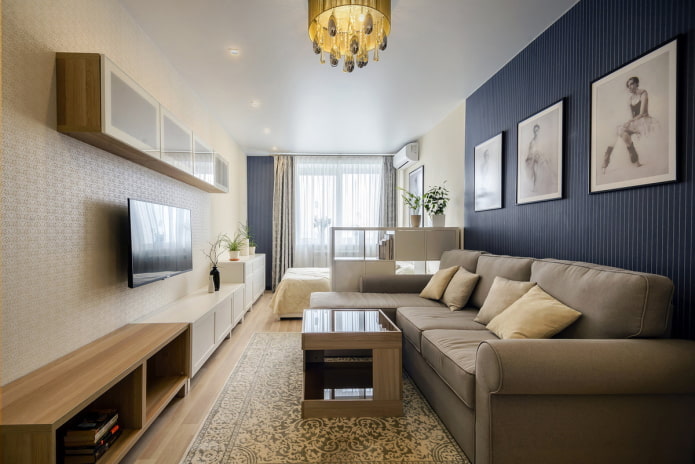
 10 practical tips for arranging a small kitchen in the country
10 practical tips for arranging a small kitchen in the country
 12 simple ideas for a small garden that will make it visually spacious
12 simple ideas for a small garden that will make it visually spacious

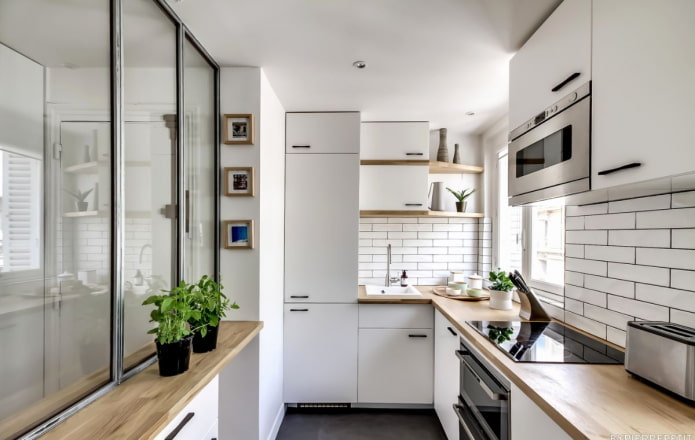
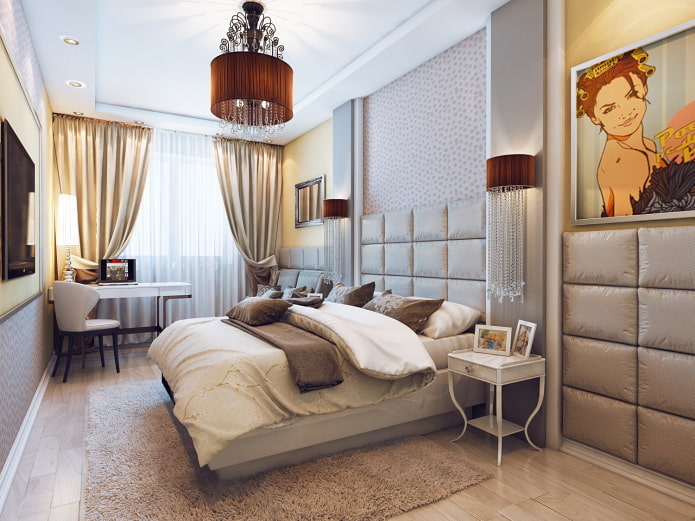
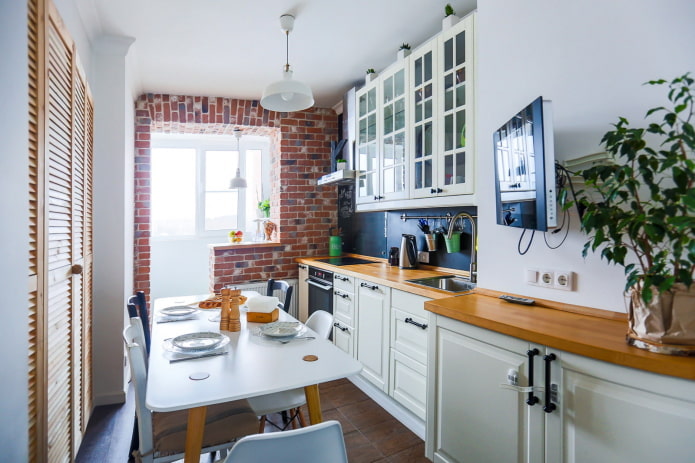
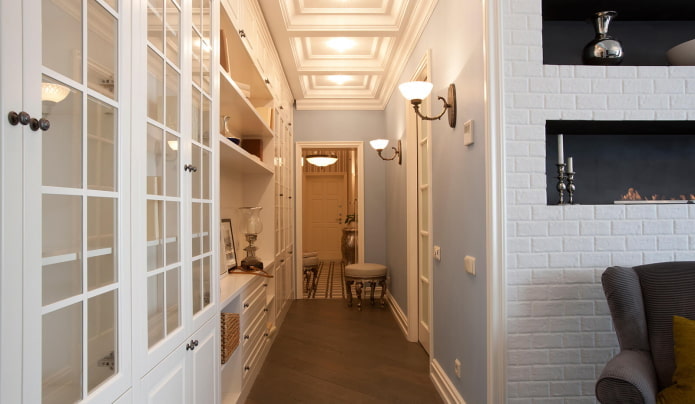
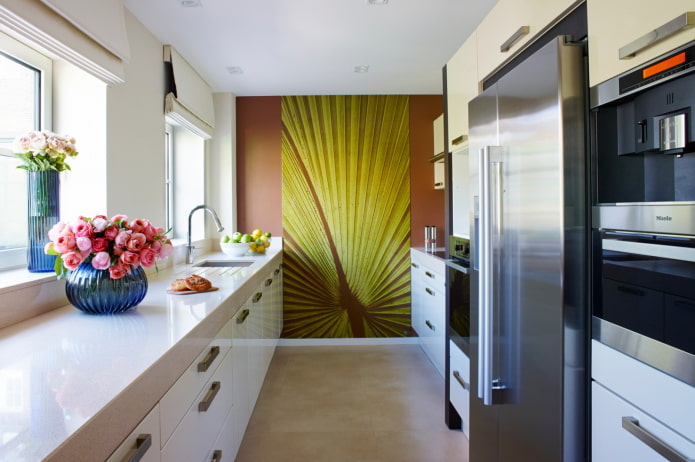


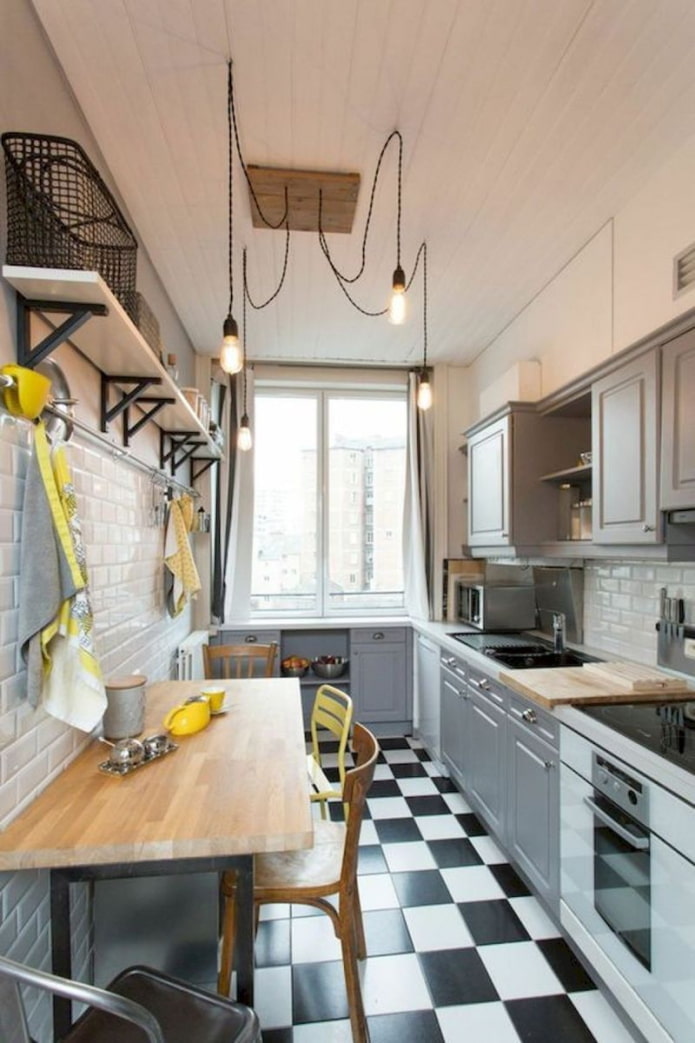
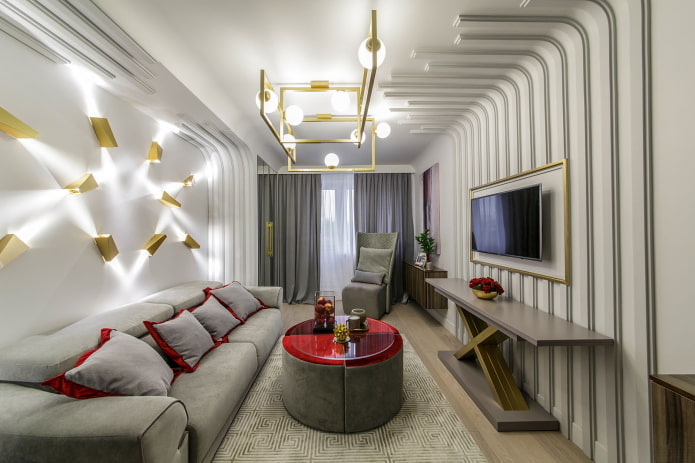
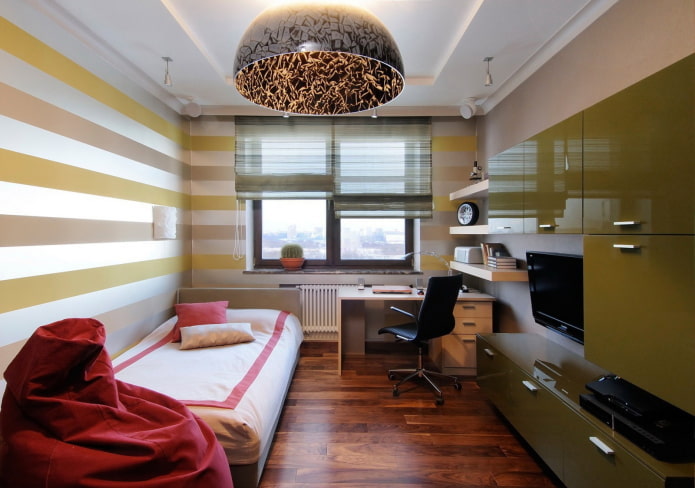
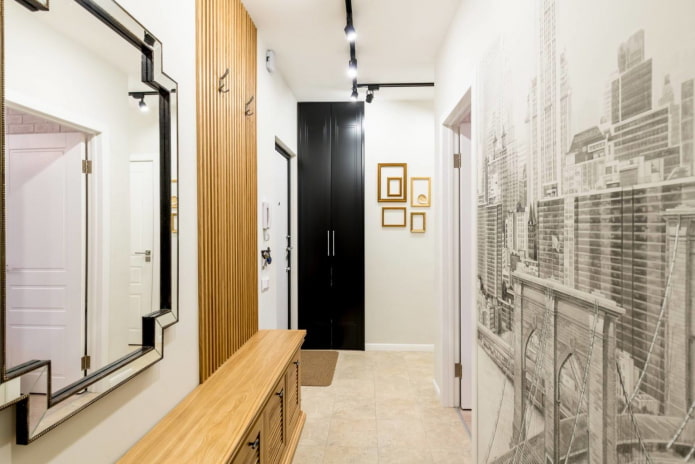
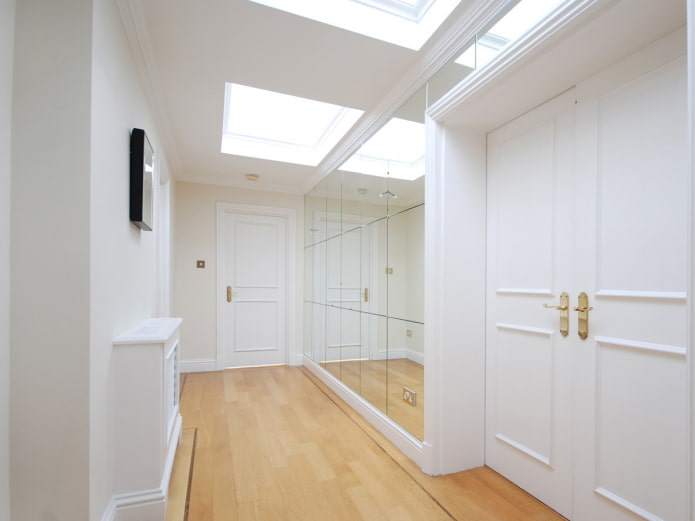
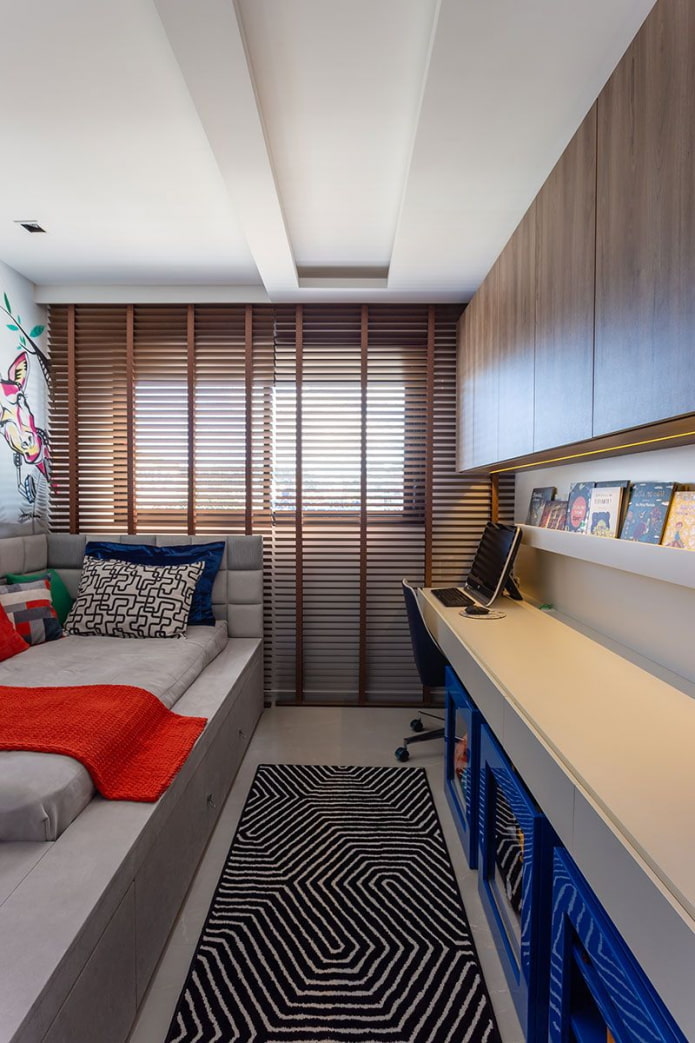
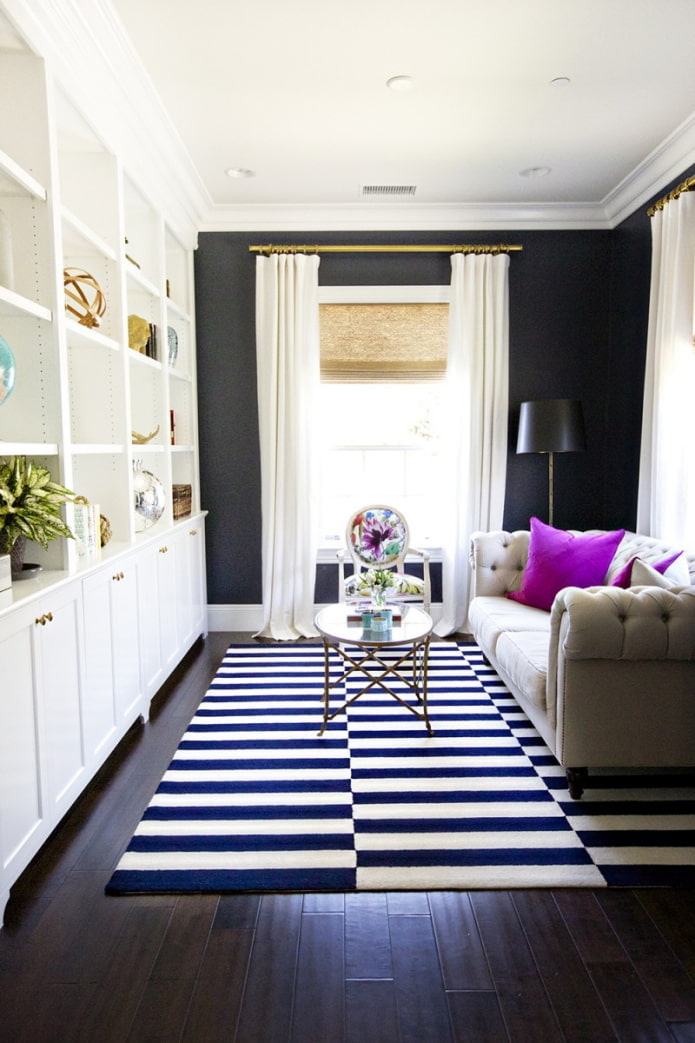
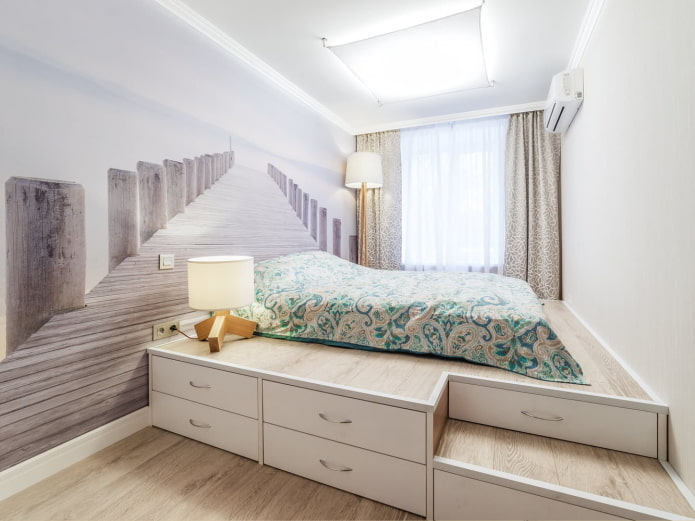
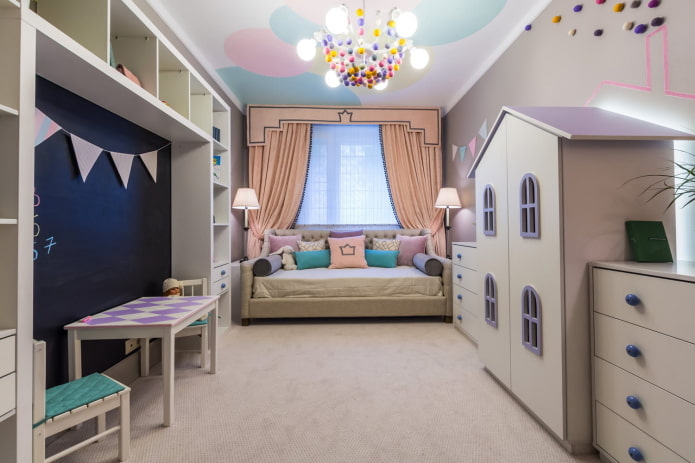
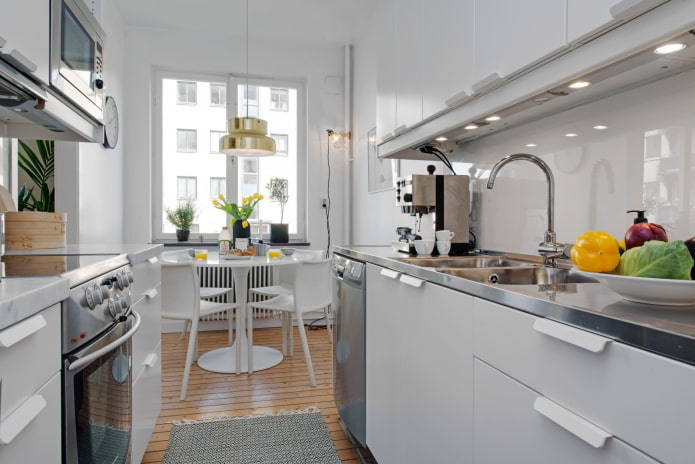
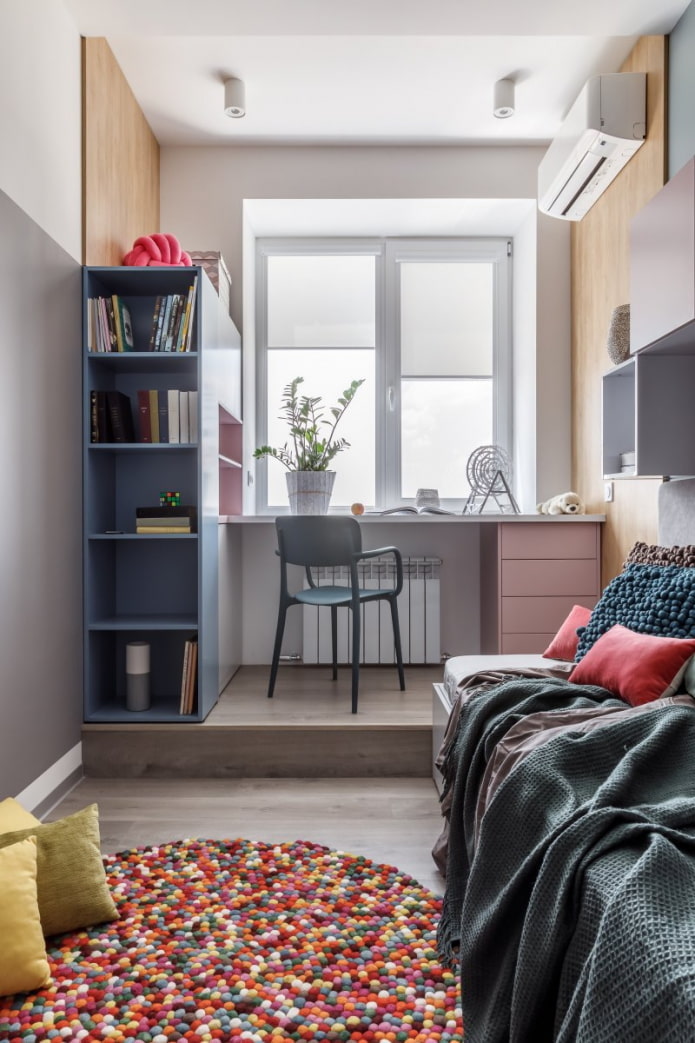
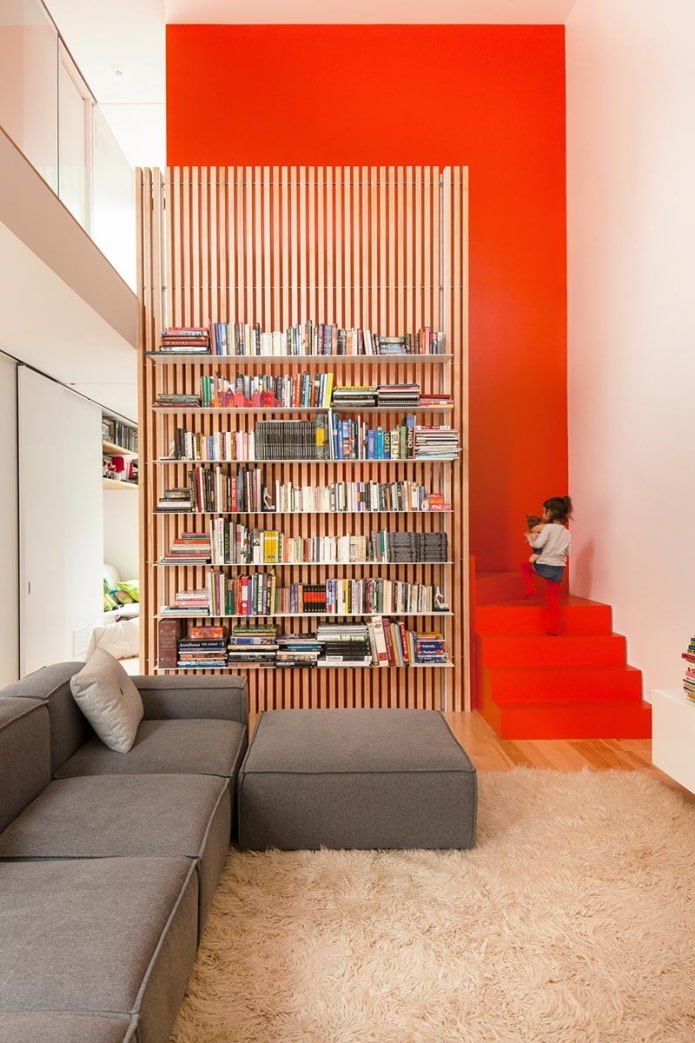
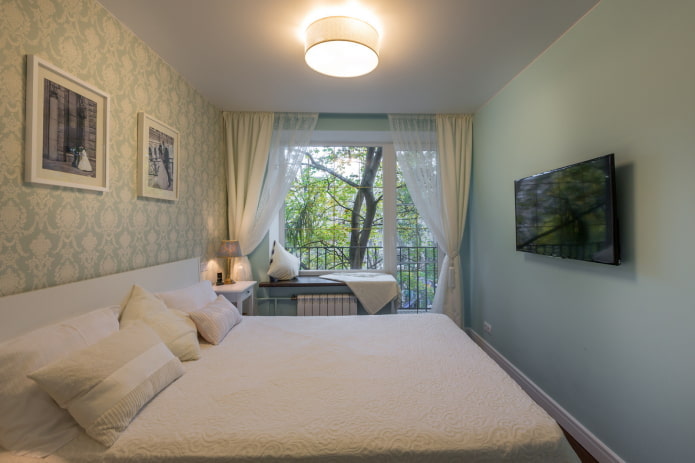

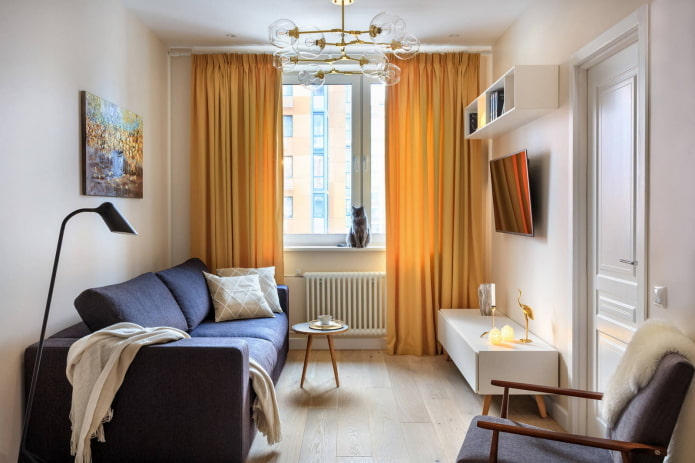
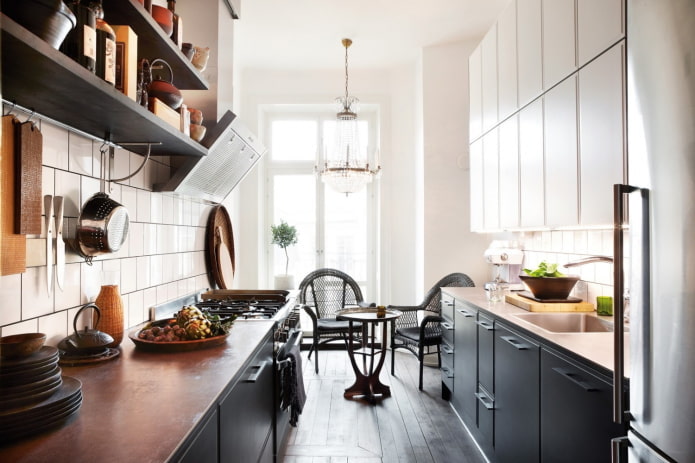
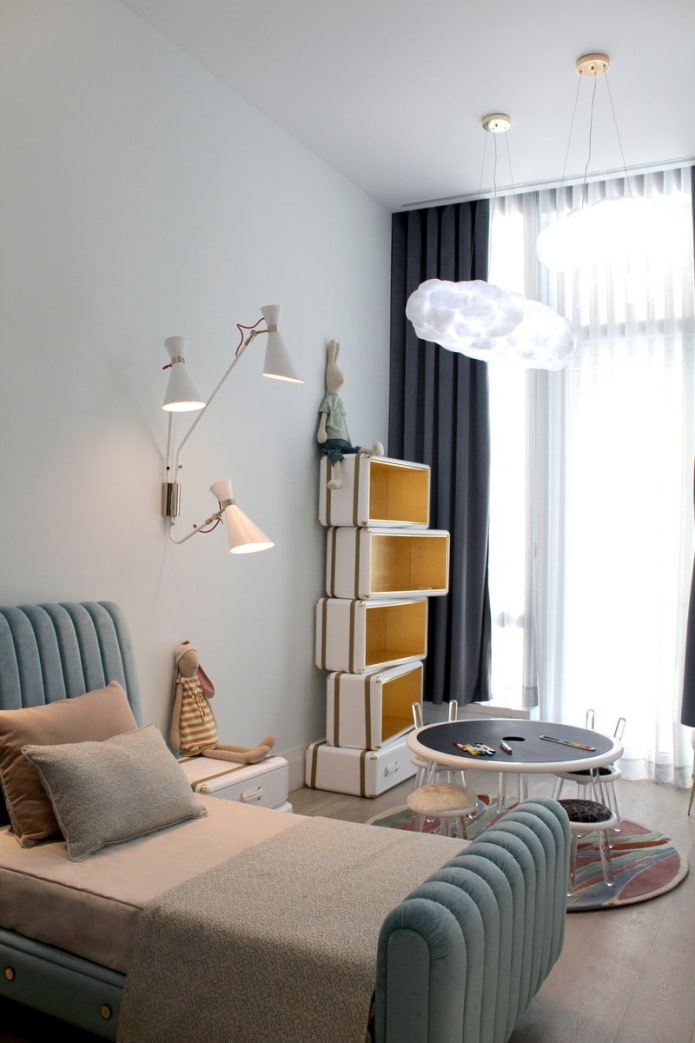
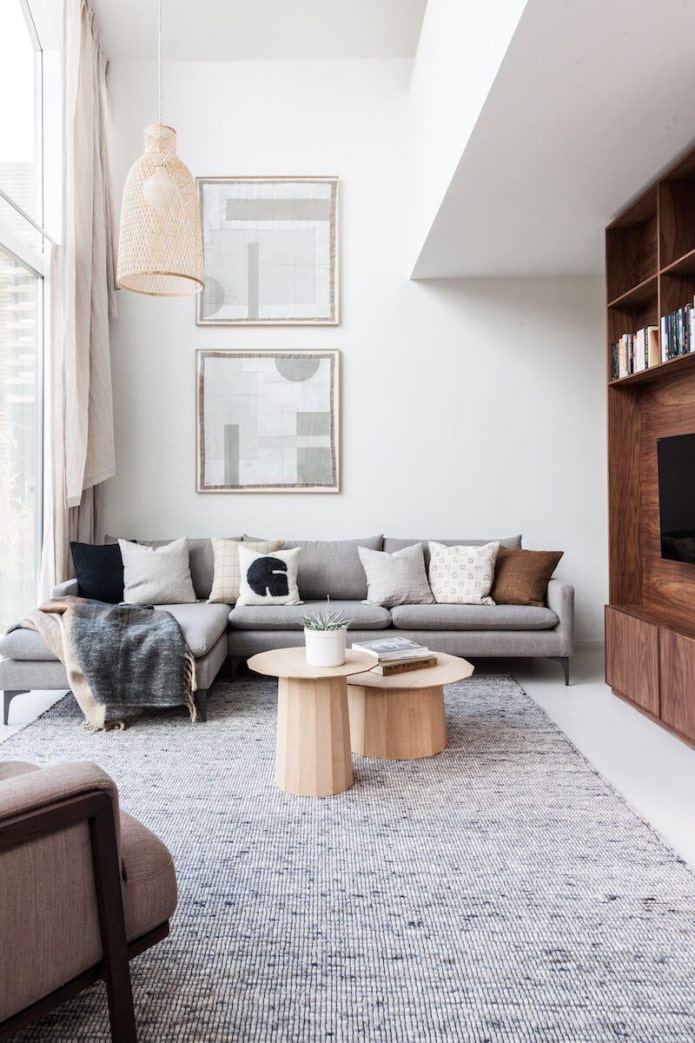

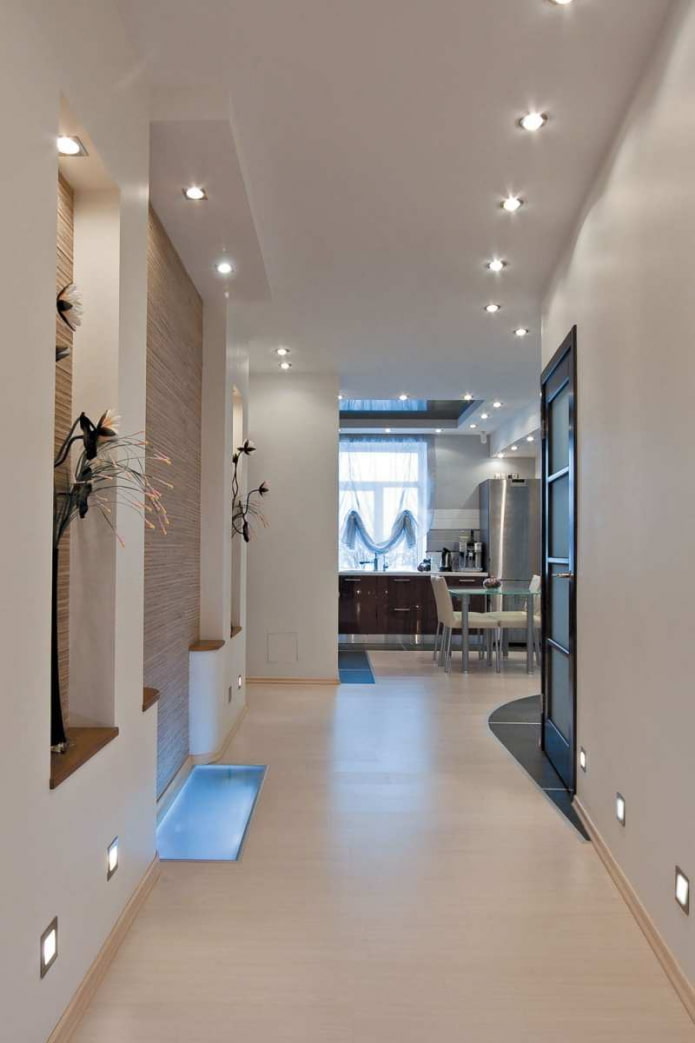
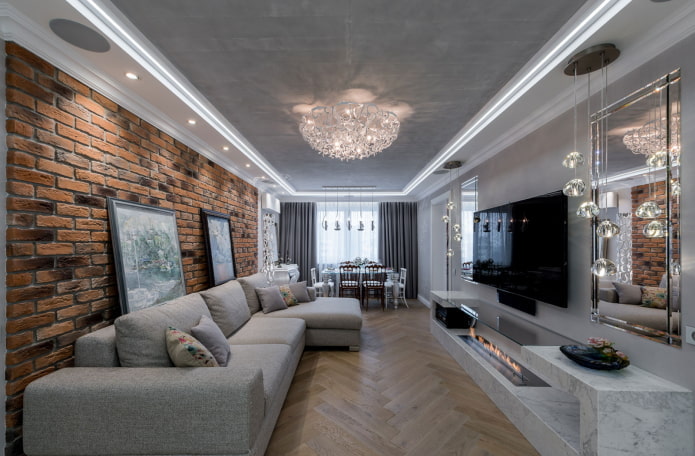
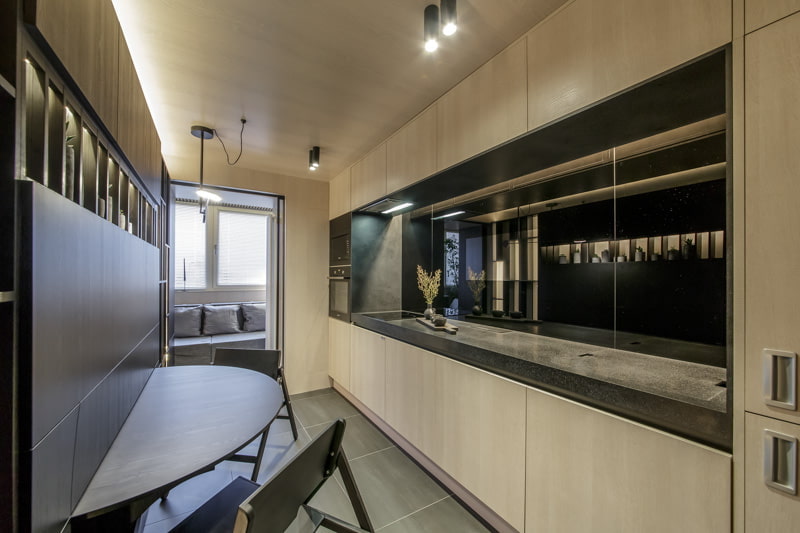
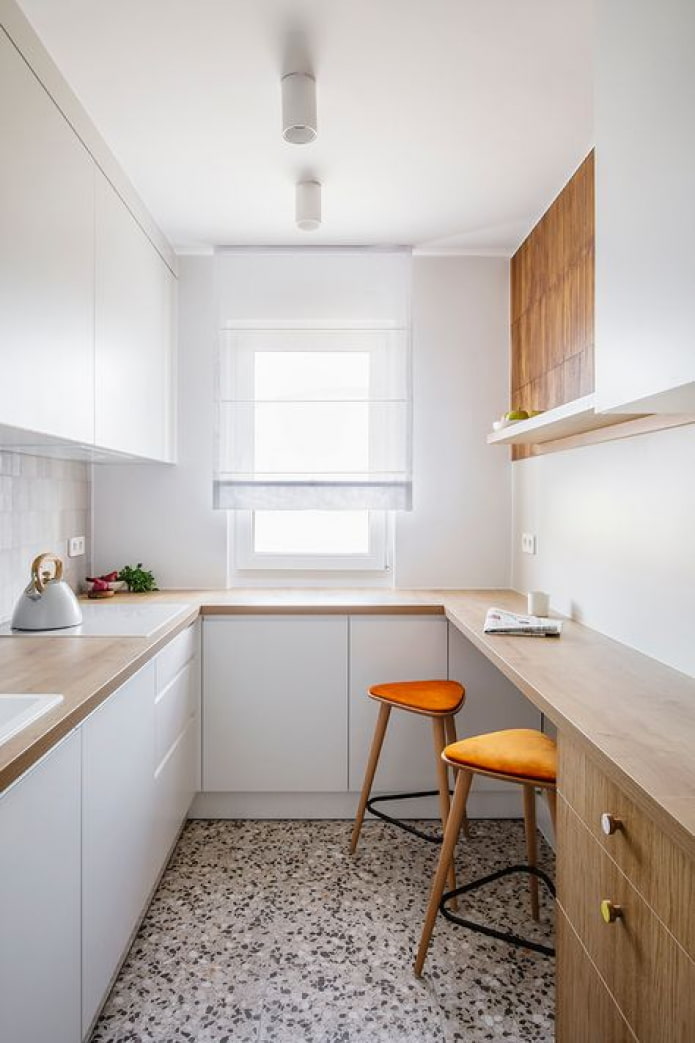
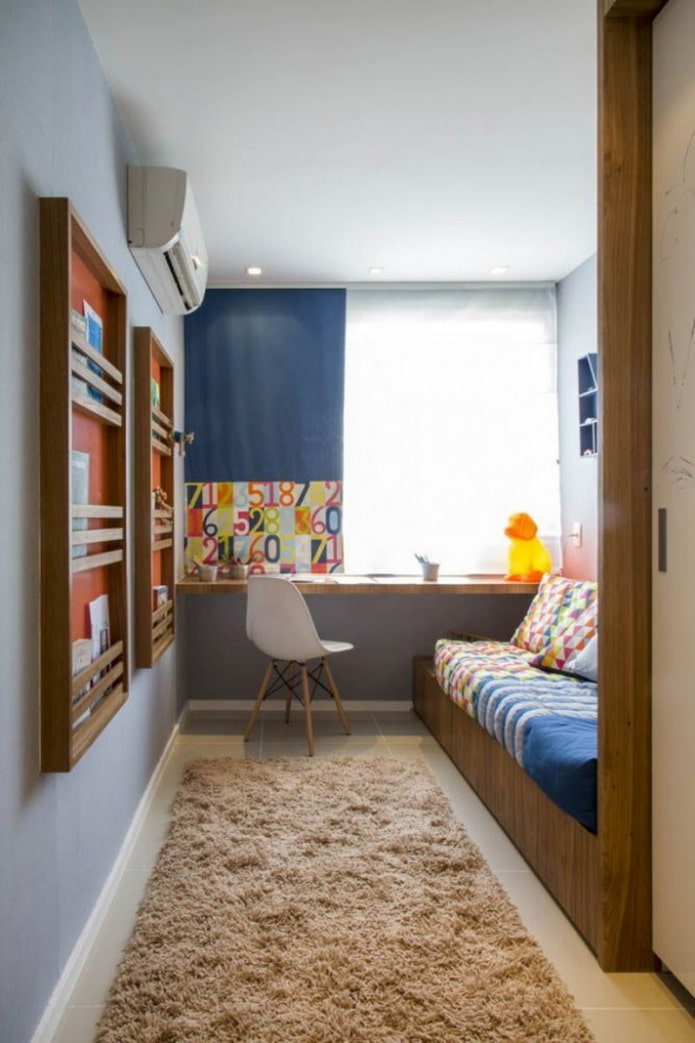
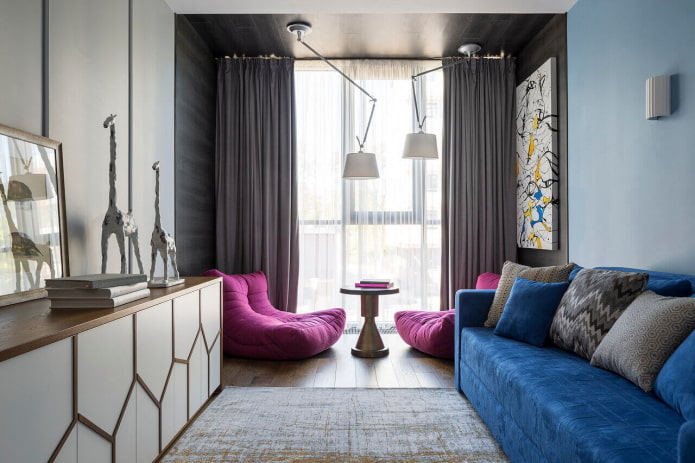
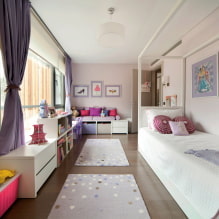
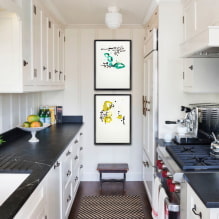
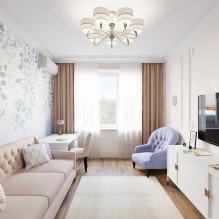
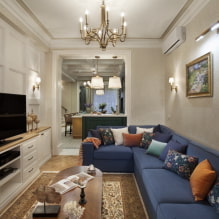

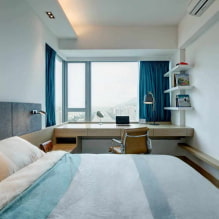
 13 bad habits a good housewife shouldn't have
13 bad habits a good housewife shouldn't have 24/7 home cleanliness - 4 secrets for the perfect housewife
24/7 home cleanliness - 4 secrets for the perfect housewife 6 hotels in Sochi that will give odds to the promoted foreign hotels
6 hotels in Sochi that will give odds to the promoted foreign hotels Top 10 interior design trends 2020
Top 10 interior design trends 2020 Rating of cheap TVs with Smart-TV
Rating of cheap TVs with Smart-TV New Year's LED garlands on AliExpress - we disassemble while it's hot, so that it's bright at home
New Year's LED garlands on AliExpress - we disassemble while it's hot, so that it's bright at home